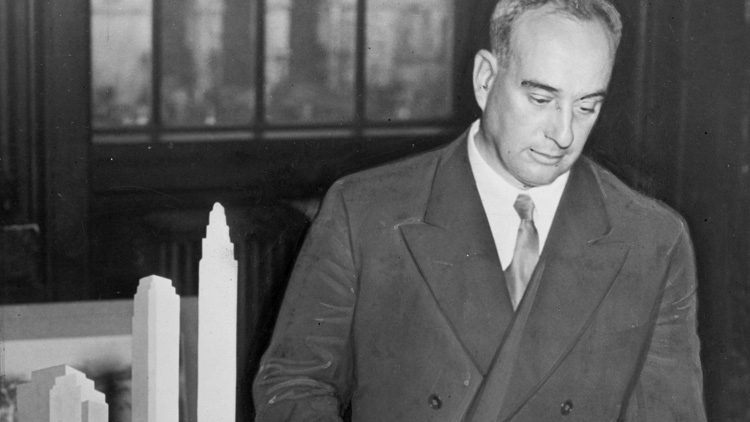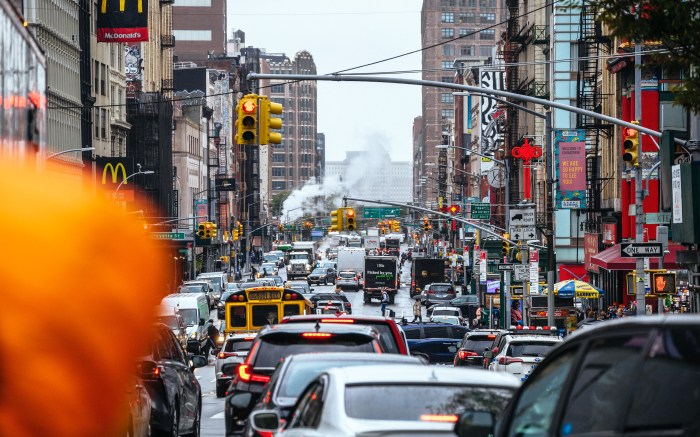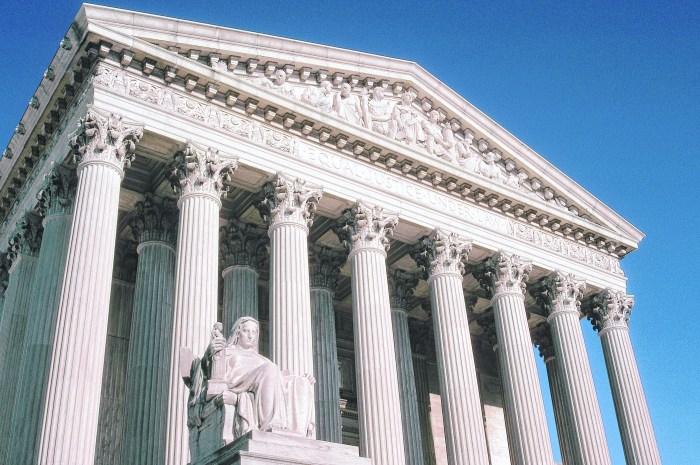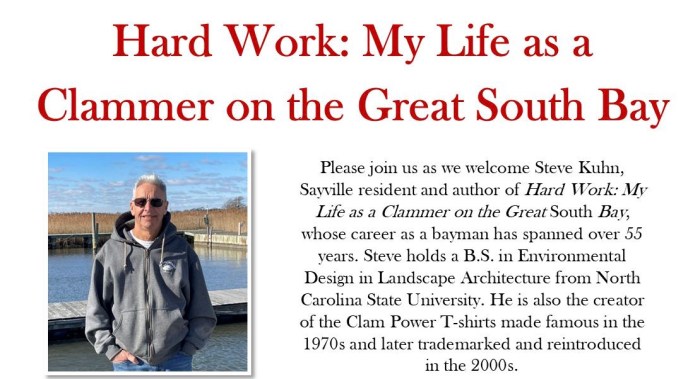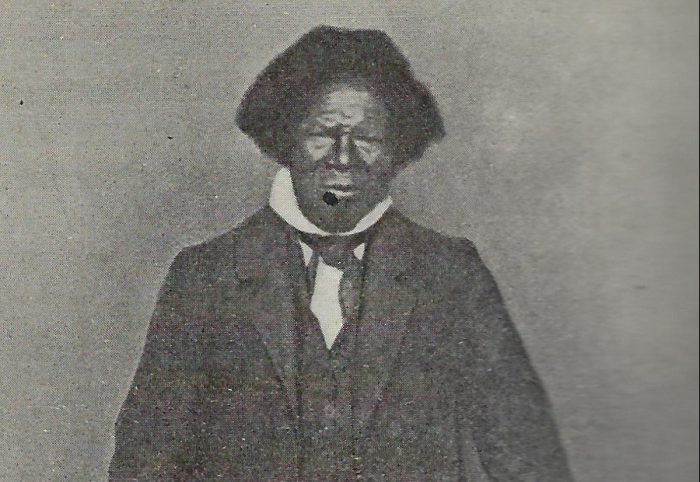While all over the United States protests have been held demanding the removal of statues commemorating individuals who were racist — notably Confederate figures — nearly 100 people demonstrated for the removal of the statue of New York public works and parks czar Robert Moses in Babylon.
The protesters marched down Main Street in Babylon holding signs reading “Robert Moses Was a Racist” and chanting “Hey Hey, Ho Ho, Robert Moses has to go,” before reaching the 1,500-pound, 7-foot-high statute in front of Babylon Village Hall.
The action in Babylon on Saturday was precipitated, as have weeks of demonstrations on Long Island and across the United States, by the murder of African-American George Floyd by a white police officer in Minneapolis on May 25.
There was an earlier focus on Moses and racism last year with the introduction of legislation by a Commack native, Assemblyman Daniel O’Donnell (D-Manhattan), to change the name of Robert Moses Park on western Fire Island because of Moses’s racial bias. The measure by O’Donnell — which has not advanced in the New York State Legislature — declares that “Robert Moses repeatedly abused his power to entrench racial and economic segregation.”
Examples cited were how when Moses built Jones Beach State Park “he intentionally ordered the overpasses of the connected parkway too low for buses, so that poor people, particularly African-American families, could not access the beach.” Also, Moses “built most public parks, playgrounds far from Puerto Rican and African-American neighborhoods.” And, says the measure, he “pursued the systematic displacement and segregation of families of color” to build Lincoln Center and “effectively allowed for the discrimination against black veterans and their families in the Stuyvesant Town development.”
The demonstrators in Babylon mirrored these charges. A flyer for the protest said the Moses statue memorialized Long Island’s “history of segregation, racism and racial violence.”
Demonstrators were called on to contact the office of Babylon Mayor Ralph Scordino and demand that the Moses statue be removed.
The racism of Moses, who was a Babylon resident, was spotlighted in a book published last year, Saving Fire Island From Robert Moses: The Fight For a National Seashore by Christopher Verga, who teaches Long Island history at Suffolk County Community College.
In it, Verga, of Bay Shore, details how the bridges on both the Southern State and Northern State Parkways, projects of Moses, were built low because, he says, Moses didn’t want buses to pass under them taking African-Americans and Latinos from the city to Jones Beach and other parks on Long Island. Writes Verga: “He was very biased.”
Robert Caro, of East Hampton, who wrote The Power Broker, the 1974 Pulitzer Prize-winning biography of Moses for which he interviewed Moses at length, has described Moses as “the most racist human being I have ever really encountered.”
Defending Moses in the face of the effort to remove the statue of him is Wayne Horsley, a former Suffolk County legislator and until last year general manager of the Long Island State Park Commission, the Long Island base in North Babylon for Moses. He held the title of chairman of the commission. Moses had run for New York governor in 1934 and lost in a landslide. He thus exercised power as head of commissions and authorities throughout the state.
Horsley, according to a Newsday story on the protest of the statue, “argued that Moses’ work help transform” to a place that “was more accessible to a much wider swath of New Yorkers.”
The legislation introduced by Assemblyman O’Donnell, an older brother of TV personality, actress and author Rosie O’Donnell, says: “The state of New York needs to begin the process of accounting for the historic harm done to communities of color by people like Robert Moses, whose actions still affect many African-American and Hispanic New Yorkers to this day.” It provided for creation of a commission “to choose a new name” for the 875-acre Robert Moses State Park.
The statue of Moses was put up in 2003. He died in 1981.
Meanwhile, the American Museum of Natural History will remove the statue of Theodore Roosevelt “flanked by a Native American man and an African man, which has presided over” the Manhattan museum’s entrance since 1940, The New York Times reported. The museum’s president, Ellen V. Futter, was quoted as saying, “Over the last few weeks, our museum community has been profoundly moved by the ever-widening movement for racial justice that has emerged after the killing of George Floyd.”
The story said “Ms. Futter made clear that the museum’s decision was based on the statue itself — namely its ‘hierarchical composition” — and not on Roosevelt himself, whom the museum continues to honor as a ‘pioneering conservationist.’”
Roosevelt, born in Manhattan, lived much of his life there but, for nearly 30 years, his family’s primary residence was Sagamore Hill in Oyster Bay in a home that also served as the “Summer White House” when he was president.
Nassau County Executive Laura Curran said following the museum’s decision: “President Theodore Roosevelt was a son of Nassau County whose boldness of vision and significant accomplishments still set the standard for great American leadership. Teddy Roosevelt established the United States as an enduring world power, introduced consumer protection as a critical function of government, pioneered our national park system and the cause of environmental conservation. There will be no change to the name of the Theodore Roosevelt Executive and Legislative Building [the capitol of Nassau County government], and the statue erected in his honor will stay right where it is.”
Sign up for Long Island Press’ email newsletters here. Sign up for home delivery of Long Island Press here. Sign up for discounts by becoming a Long Island Press community partner here.



